Filter by
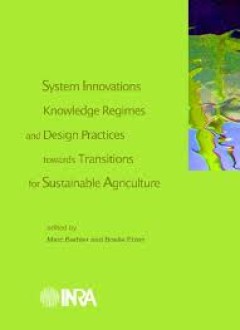
System Innovations, Knowledge Regimes, and Design Practices towards Transitio…
Over the past decade the transition towards sustainable agriculture has been a central theme in the work of many organisations, including government bodies, NGOs, professional organisations and research institutions. Various publications, including White Papers by the EU and different national governments, have defined future targets and objectives to improve sustainability in various subs…
- Edition
- -
- ISBN/ISSN
- -
- Collation
- -
- Series Title
- -
- Call Number
- 630 BAR s

Botrytis – the Fungus, the Pathogen and its Management in Agricultural Systems
The fungal genus Botrytis is the focus of intensive scientific research worldwide. The complex interactions between this pathogen and the plants it infects and the economic importance of the diseases caused by Botrytis (principally grey mould) on more than 1400 species of cultivated plants pre- and post-harvest, render this pathogen of particular interest to farmers, advisers, students and rese…
- Edition
- -
- ISBN/ISSN
- 978-3-319-23371-0
- Collation
- -
- Series Title
- -
- Call Number
- 630
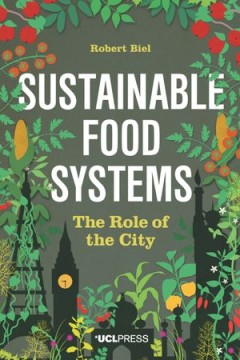
Sustainable Food Systems : The Role of the City
This book places itself within the traditions and the ongoing activity of UCL’s Bartlett Development Planning Unit, and within its research cluster, Environmental Justice, Urbanisation & Resilience. It draws heavily upon my teaching for the Environment and Sustainable Development Masters. I owe an immense debt to all my fellow Development Planning Unit (DPU) staff, as well as past and prese…
- Edition
- -
- ISBN/ISSN
- 9781911307099
- Collation
- -
- Series Title
- -
- Call Number
- 630 BIE s
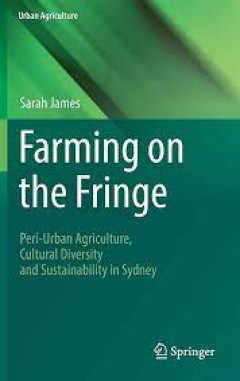
Farming on the Fringe Peri-Urban Agriculture, Cultural Diversity and Sustain…
This volume offers a new perspective to debates on local food and urban sustainability presenting the long silenced voices of the small-scale farmers from the productive green fringe of Sydney’s sprawling urban jungle. Providing fresh food for the city and local employment, these culturally and linguistically diverse farmers contribute not only to Sydney’s globalizing demographic and cultur…
- Edition
- -
- ISBN/ISSN
- 978-3-319-32235-3
- Collation
- XI, 197
- Series Title
- -
- Call Number
- -
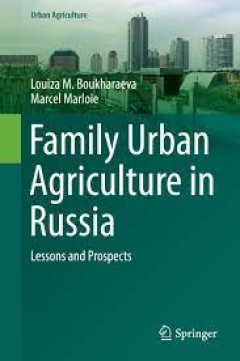
Family Urban Agriculture in Russia Lessons and Prospects
The book results from research carried out by the authors since 1999 on urban gardening collectives in Russia, then from the extension of this research towards collective urban gardening in France, with some investigations in other European Union Member States and Brazil. This research was carried out within the framework of Kazan University (currently, the Institute of Administration and Terri…
- Edition
- -
- ISBN/ISSN
- 978-3-319-11614-3
- Collation
- XVII, 215
- Series Title
- -
- Call Number
- -
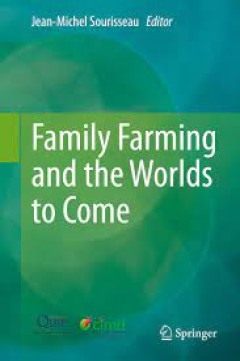
Family Farming and the Worlds to Come
What is family farming? How can it help meet the challenges confronting the world? How can it contribute to a sustainable and more equitable development? Not only is family farming the predominant form of agriculture around the world, especially so in developing countries, it is also the agriculture of the future. By declaring 2014 the “International Year of Family Farming,” the United Nati…
- Edition
- -
- ISBN/ISSN
- 978-94-017-9358-2
- Collation
- X, 361
- Series Title
- -
- Call Number
- -

Medicinal and Aromatic Plants of the World
Medicinal and aromatic plants (MAPs) have accompanied mankind from its very early beginnings. Their utilization has co-evolved with homo sapiens itself bringing about a profound increase in our scientific knowledge of these species enabling them to be used in many facets of our life (e.g. pharmaceutical products, feed- and food additives, cosmetics, etc.). Remarkably, despite the new renaissanc…
- Edition
- 1
- ISBN/ISSN
- 978-94-017-9809-9
- Collation
- VIII, 460
- Series Title
- Medicinal and Aromatic Plants of the World
- Call Number
- -
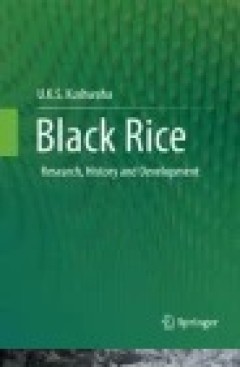
Black Rice : Research, History and Development
The main purpose of this book is to introduce black rice to a wider circle of people. Although there have been research on different aspects of black rice, the information is scattered and not easily accessible to laypersons. The book intends to cover all the aspects of black rice from research, history, to its development. As such, the book will be suitable for both rice researchers and non-pr…
- Edition
- -
- ISBN/ISSN
- 978-3-319-30153-2
- Collation
- -
- Series Title
- -
- Call Number
- 630
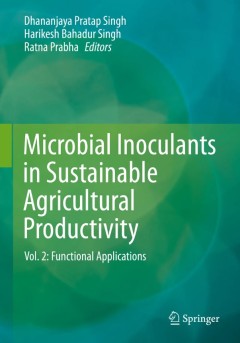
Microbial Inoculants in Sustainable Agricultural Productivity
The performance of crops in the soil largely depends on the physico-chemical components of the soil, which regulate the availability of nutrients as well as abiotic and biotic stresses. Microbes are the integral component of any agricultural soil, playing a vital role in regulating the bioavailability of nutrients, the tolerance to abiotic and biotic stresses and management of seed-borneand soi…
- Edition
- 1
- ISBN/ISSN
- 978-81-322-2642-0
- Collation
- XVI, 308
- Series Title
- -
- Call Number
- -

Microbial Inoculants in Sustainable Agricultural Productivity
The performance of crops in the soil largely depends on the physico-chemical components of the soil, which regulate the availability of nutrients as well as abiotic and biotic stresses. Microbes are the integral component of any agricultural soil, playing a vital role in regulating the bioavailability of nutrients, the tolerance to abiotic and biotic stresses and management of seed-borneand soi…
- Edition
- -
- ISBN/ISSN
- 978-81-322-2642-0
- Collation
- Number of Pages XVI, 308
- Series Title
- -
- Call Number
- -
 Computer Science, Information & General Works
Computer Science, Information & General Works  Philosophy & Psychology
Philosophy & Psychology  Religion
Religion  Social Sciences
Social Sciences  Language
Language  Pure Science
Pure Science  Applied Sciences
Applied Sciences  Art & Recreation
Art & Recreation  Literature
Literature  History & Geography
History & Geography